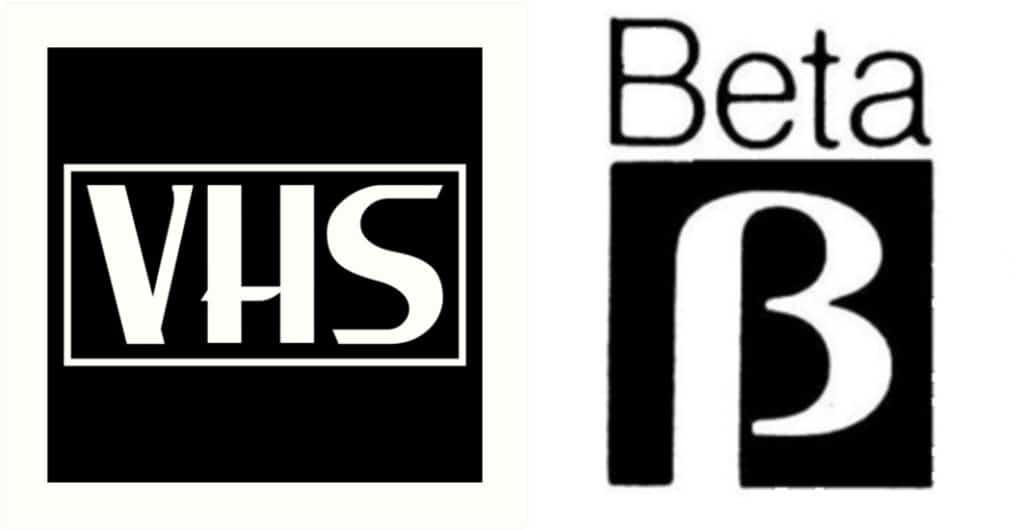
Over the years there have been many format and console wars including Nintendo/Sega, Playstation/Xbox, Apple/Android, Kelly/Topanga but there was one format war that ruled them all…
The VHS vs Beta format wars which started in the late 1970s would stretch into the ‘80s. As video players became more affordable the battle would continue to grow with the VHS format ultimately winning out and leading to the end of Beta.
My grandpa was one of those early adopters, a
He went with Beta because it was the superior model (or so he and everyone would think) but this would lead to a long battle between it and the (slightly inferior) VHS.
The Importance Of The VCR In Our Lives
There’s an interesting thought that the very advent of home video players essentially helped to create nostalgia as we know it. Up until that time, anything you watched was a one time shot. There was no reliving sports moments or your favorite shows. You would have to hope to catch them on a repeat the same way you would sit by your tapedeck listening to the radio to catch, and record, your favorite song.
And it also didn’t occur to me that real fandom and investment in movies couldn’t really happen until the creation of VCR’s. If there was a movie you loved before the late ‘70’s or ‘80s you only had access to it in the the theatre for a short time. You couldn’t really spend a lot of time delving deeper into it and appreciating all the unique moments. The VCR allowed us to pour over these movies and develop a real knowledge and appreciation for them. You could rewind parts of E.T or Indiana Jones that you didn’t catch before and you became more invested and connected to them.
I distinctly remember the first VCR we got. The idea that we could now take what we had watched on T.V and had it stored on tape to re-watch anytime was pretty mind-blowing. And you could even set it to record shows when you weren’t even there. The first VCR I remember had this little panel with small little dials that were basically a rotary form of setting a day and time to record. I also remember being so unsure how it all worked and thought that we had to leave the T.V on in order for the picture and sound to be recorded.
The day when my dad first brought home a VCR that had on-screen programming was, to me, the very height of innovation. You could control, with a remote, whatever you wanted and you could also set up multiple recordings. I also remember getting my own blank VHS tape every Christmas to record whatever the hell I wanted on it.
The Creation of The VCR
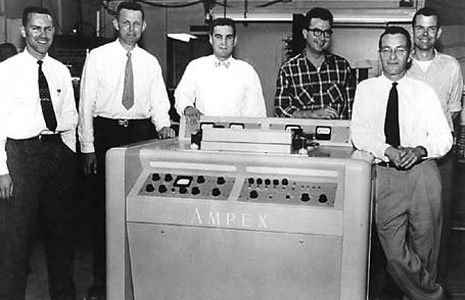
The VCR as a tape player actually goes WAY farther back than you may realize. The Ampex corporation created the VCR in 1956 and it was called the VRX-1000. It used a rotating head design to record video and audio on a magnetic track and cost $50,000 bloody dollars.
Obviously, no one in hell could afford to pay for something like this and even if you did you needed an actual technician to help run it. And the whole thing would only have a lifespan of a few hundred hours. Sounds like a good investment…
I’m not sure who the target market was for the VRX-1000 but there’s no way it could have been the average consumer as 50k back then is the equivalent of $325,000 today. And it was never originally intended for use by television companies which seems really odd. The prospect of the technology was instantly recognized by some networks and despite the cost, they could foresee the idea of not always having to do live broadcasts.
One of the first shows to use this format was the Honeymooners with Jackie Gleason back in 1952 with the Electronicam system. They would record their shows live but onto
The Sony U-Matic And The Progression Of The VCR

A prototype for one of the first commercial players was debuted in October 1969 in Japan. Sony wanted to come up with an industry standard and they did with the Sony U-Matic in 1971 which would be the worlds first video cassette recording format. It used tapes that were a bit bigger than a standard VHS tape and only had a maximum playing time of 60 minutes at first.
Phillips was also in on the game and had brought out a home video cassette format in 1970 that was specifically made for T.V stations and then would become available on the consumer market in 1972. The machine was originally called the N1500 but they had a different name for this new format:
Video Cassette Recording, or VCR.
So at this time, we’ve only got one format but the concept of the VCR is taking off. The industry boomed in the ‘80s with 10% of housholds owning one and 30% by 1985.
But before that the concept of the VCR would become commonplace in most households it would split into two different formats; Beta and VHS
The Creation of Betamax
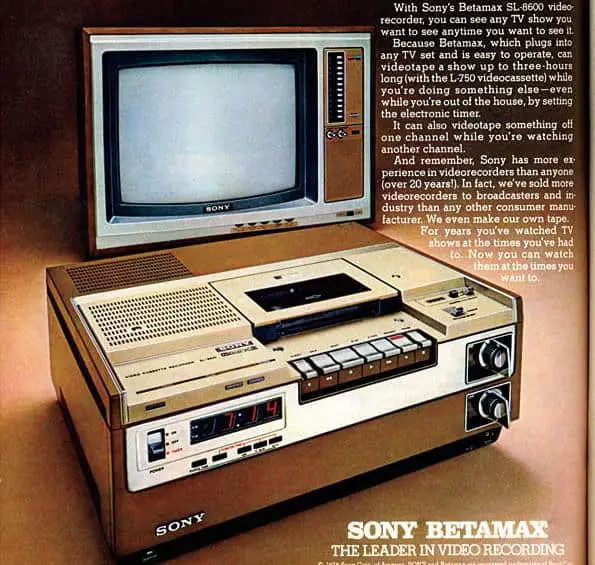
Sony started in 1974 with the protptype for the a video recording system called “Beta”. At the same time, JVC was looking at going with a different format and it caused enough of a commotion that Sony appealed to the Japanese Ministry of Trade and Industry and right there they inadvertently started the format wars.
Sony released their first Betamax machines in 1975 and used cassette tapes that used a 0.50-inch wide tape inside. The idea is that the whole Beta tape was “hand-sized” for easier use. Not that handling a videotape is the most strenuous thing in the world.
If you’ve wondered why the name Beta it’s because the word has a double meaning; Beta is the Japanese word to describe the way that signals are recorded on the tape. And the shape of the lowercase B was to demonstrate the way the tape moved throughout the machine.
The one problem that plagued Sony right out fo the gate was due to the length of the tape. For the T.V industry, their past machines had a tape length of one hour. This made total sense because of most shows never being longer than an hour including commercials. Plus the studios would have multiple machines and technicians who were able to change the tape. Sony saw no reason why the general public wouldn’t want the same.
And this might have been what lead to their ultimate demise.
There was always a focus on quality with the Betamax and through the ‘80s Sony put out a few upgraded versions including:
- Beta Hi-Fi
- SuperBetaMax
- Extended Definition Betamax
These versions would improve on picture quality and sound and started to address the issue of the runtime of the tapes. Some of the models on the different settings would allow up to 90 minutes and at most, they could do around 4-5 hours but these were on the highest end machines that you wouldn’t see in most homes.
Meanwhile….
The Creation of VHS
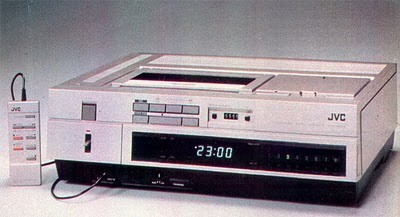
Sony actually could have controlled the whole industry but their attempt to dictate the industry standard backfired. They had approached JVC about selling the patent of the Betamax so that JVC could do the manufacturing. This had happened already with the U-Matic and ended up with Sony dominating the industry. JVC made the very smart decision to decline the offer but instead come up with their own technology and format.
So the Video Home System (VHS) was first released in 1977 but they had actually been playing around with it as early as 1971. In these early days they actually came up with a set of guidelines that would be paramount in the existence of VHS:
- The system must be compatible with any ordinary television set.
- Picture quality must be similar to normal air broadcast.
- The tape must have at least a two-hour recording capacity.
- Tapes must be interchangeable between machines.
- The overall system should be versatile, meaning it can be scaled and expanded, such as connecting a video camera, or dub between two recorders.
- Recorders should be affordable, easy to operate and have low maintenance costs.
- Recorders must be capable of being produced in high volume, their parts must be interchangeable, and they must be easy to service.
One of the big differences here is the fact JVC wanted their standard to be used by other manufacturers and not totally controlled the way Sony was with Beta. JVC persuaded Hitachi, Mitsubishi, and Sharp to sail on the good ship VHS.
VHS was using a bigger videotape than the more compact and convenient Beta but with one big difference; it had a longer recording time. Right out of the gate a VHS tape could record 2 hours. That was good to cover most movies – including commercials – or four regular sitcoms.
It didn’t take long for some adjustments to be made. A VHS VCR could now have different recording settings such as SP, LP, and SLP. You could now slow down the speed of the tape as it recorded which would reduce the quality but give you double and triple the storage capacity. Add to this that a VHS cassette tape was big enough to hold around 1400 feet of tape and you now had the ability to fit 6 hours on tape with no problem.
And this is what would be the centerpiece of the war.
VHS & Beta Go Head To Head
O.K that’s actually a pretty funny joke when you think about head to head and the fact VCR’s use heads to play the tape. Alright, it’s not funny but it’s the best you’re going to get out of me.
When it came down to quality it appeared that Beta had VHS beat. Both concepts used a horizontal resolution involving lines and Beta had a slightly higher resolution of around 250 lines. They could get this up to around 290 with the SuperBeta but this was in 1985 and they were starting to lose the format war.
There’s always been this idea that Beta was vastly superior when it came to picture quality and everything but when you look back at the technical details of two average machines they ended up being almost identical. It was the earliest version of Beta that had a superior picture but this was before they became more mainstream. A big reason for this idea of Beta always being such a higher quality was as much due to them being marketed that way by Sony. People began to just buy into it.
Not only was recording length one of the main factors of the VHS vs Beta wars but retail price was also in the mix. Due to JVC bringing other manufactuerers into the mix they could all compete against one another allowing for lower prices for the consumer but ultimatley more sales over all. By 1984 there were over 70 different VCR manufacturers.
There are so many variations and prices of Beta and VHS players so it’s hard to get a definite comparison but to start off in 1976 the average price for a VCR was around $1200. Converted to today that would be over $5500 today which is crazy to think about. But an article by the Chicago Tribune from 1985 talks about how the majority of the VHS selection sells between $200-$400 which today would be the equivalent of $460-$920.
This would be hundreds less than Betamax machines were costing at the same time.
The Outcome of the War
So ultimatley the Betamax did have a slightly better picture, a bit better audio and a more stable image. The problem, as much as the price had something to do with it, came down to recording time and specifically one thing:
Football.
One of the biggest complaints about Beta early on was the inability to record football games which can average 3 hours in length. People already knew that a VCR was capable of recording T.V shows and most movies but the feedback continued to be about the issue of not being able to fit an entire sports event on a Beta tape.
The other problem is it didn’t take long for the VCR, in general, to become synonymous with VHS. Although Betamax owned 100% of the market in 1975 by 1980 VHS was controlling 60% of the market. By 1981 Beta sales had dropped to just 25% of the VCR market. By 1986 it was just 7.5%. There’s always been this myth that the porn industry was involved with pushing Betamax away for not wanting to be their format of choice but there’s no truth in this.
It was the combination of the poor sales and then the fact that the huge video rental market was emerging. Movie studios, video studios, and all these new rental stores were turning away from Betamax. Fewer and fewer people were choosing the more expensive option with the limited recording capacity and it wasn’t worth it for these stores to stock every movie title in Beta format. The lack of available titles, and the low market share, allowed VHS to keep to a distant lead.
The End Of Beta
Sales of Beta eventually dwindeld enough to allow VHS to emerge as the victor in the format wars. The sign that it was all over would come in 1988 when Sony essentially threw in the towel.
They had started making VHS machines.
7Surprisingly though they would still make Beta machines until 2002. Who the hell was still using these then?
What it all came down to was Sony ignoring what the market wanted. They weren’t listening to what the public wanted and took it upon themselves to deiced that a 1-hour tape was all that people would need. Once again, football games are partly what would sink them in the long run.
Sony hung to this idea that people would want the superior quality but that wasn’t the case. As usual, people wanted cheaper, better usage and compatibility and they found this with VHS.
It’s tough when a company tries to dictate how the market will go and this ended up biting Beta in the ass. VHS would rule for an amazing 40 years but ultimately the VHS format would die out too to DVD and then blu-ray. But the sign of the strength of VHS still exists in the dual VHS/DVD combo machines.
The craziest thing I learned in all this? Even though Sony stopped making Betamax machines in 2002 they were still producing the video cassettes until March 2016! This is mind-boggling that people were still apparently buying them.
Final Thoughts On VHS vs Beta
Like I said at the start, I only knew two people who owned a Betamax and one of hem was my Grandpa who would end up getting a higher end VHS when they became available. I still remember that giant Betamax machine that looked like it would take four men to lift it and made more mechanical noises than a forklift.
For the rest of us, we all had VHS and it’s the definitive part of our childhood in the ‘80s. We could now own the movies we loved and rewatch them any time. We could record anything we wanted off of live T.V to relive it again and again.
The VHS vs Beta format wars turn out to be a very interesting story and they serve as a lesson for a classic marketing case study. So no matter what format you supported the one thing that will always bind us all together will forever remain this:
Be Kind, Rewind.


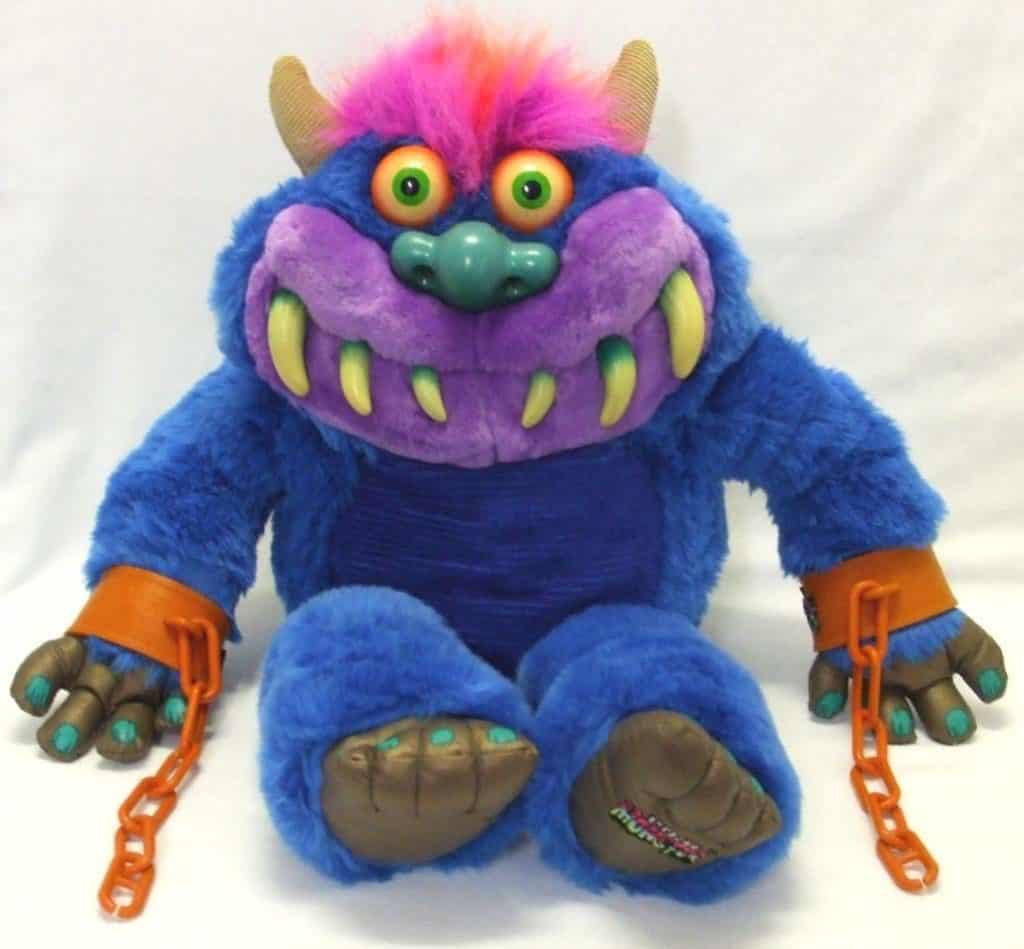
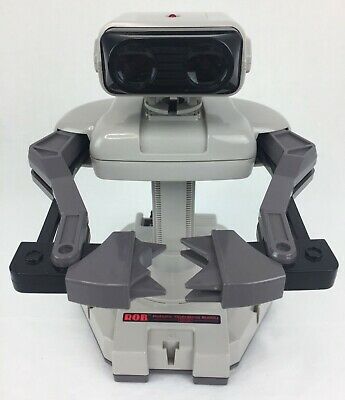
Comments
Comments are closed.